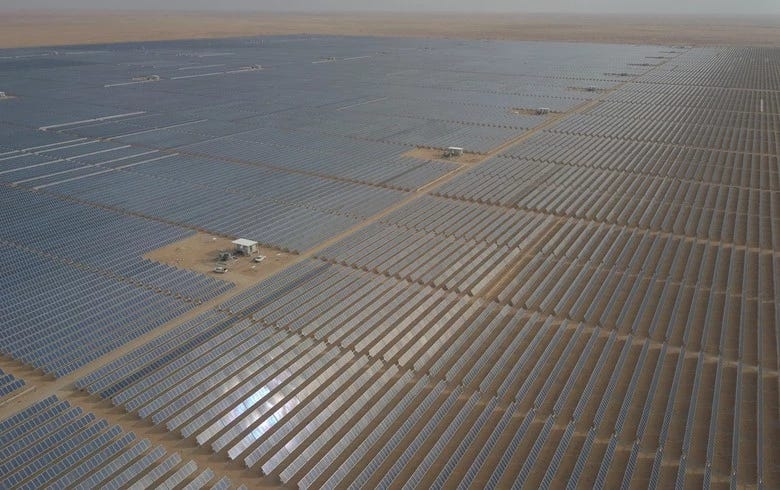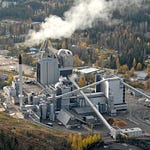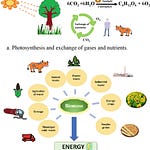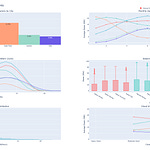Four weeks ago, I launched this blog with grand ambitions. Document everything. Share all the data. Build in public. Transform the energy sector with radical transparency.
Yeah, about that.
Turns out writing about energy while doing energy while studying energy is like trying to change a tire while the car's still moving. Possible? Maybe. Advisable? Definitely not. Fun to watch? Absolutely.
Here's what actually happened in Month 1.
Surprise #1: Everyone's Lying About Capacity Factors
Not maliciously. Just... optimistically.
After publishing the solar variability analysis, my inbox exploded. The responses fell into three categories:
Solar developers: "Our projects definitely hit 28% capacity factor!" (Narrator: They didn't)
Investors: "So THAT'S why our returns suck"
Random uncle: "This is why nuclear is better" (Thanks, Uncle)
The best email came from a developer in Ghana who sent me their actual generation data. Their feasibility study promised 26.5% capacity factor. Reality? 19.8%.
His explanation: "We used meteonorm P50 solar irradiance data because the consultant said it was 'close enough.'"
Close enough. In energy modeling. Chef's kiss.
Surprise #2: The Code People Actually Want
Remember that elaborate solar dashboard I built? The one with interactive plots and sophisticated analysis?
Nobody cares.
You know what got 500+ downloads? This stupid Excel formula:
=IF(YOUR_IRR>15%,"Check your assumptions","Still probably wrong")
The most popular code snippet wasn't my elegant pvlib integration. It was this:
def reality_check(claimed_capacity_factor):
"""
Applies universal solar truth
"""
return claimed_capacity_factor * 0.75 # Industry standard optimism tax
Turns out people don't want sophisticated models. They want simple tools that call out BS.
Note to self: Build more BS detectors.
Surprise #3: Writing Is the Easy Part
Week 1: Wrote 4,000 words in one sitting. Felt like a god.
Week 2: Spent 6 hours making charts pretty. Published at 3 AM.
Week 3: Debugged code for 4 hours. Forgot to eat.
Week 4: Currently writing this in an airport because it's the only quiet time I have.
The writing flows. It's everything else that kills you:
Data cleaning: 40% of time
Making charts not suck: 30% of time
Actual analysis: 20% of time
Writing: 10% of time
Explaining to my PhD supervisor why I'm "blogging instead of researching": Priceless
Reader Questions (The Fun Part)
Q: "Why don't you just use Homer Pro like everyone else?"
—Anonymous (definitely Homer Pro sales)
Because Homer Pro costs $500/month for all modules and assumes your wind data is accurate. My wind data thinks Tuesday was hurricane season. Also, I'm a student. I eat Instant Noodles for dinner. $500 is my food budget.
Q: "Your temperature assumptions seem optimistic. Nigeria isn't California."
—David K., EPC contractor
David coming in hot with the truth. You're right. I used 25°C ambient because that's what the textbook said. Reality check: Lagos at 2 PM is 35°C in the shade. If there was shade. Which there isn't.
Updated the models. Everything got worse. Thanks, David.
Q: "Can you share the raw data from the NREL API calls?"
—Multiple data nerds
Yes! But also no. NREL's terms of service are longer than my thesis. But here's the code to pull your own data, plus my cleaned datasets with location info stripped. Go wild.
Q: "Love the honesty! When are you covering hydrogen?"
—Multiple people who hate me
Week 9. God help us all. I know just enough about hydrogen to be dangerous and not enough to be useful. It's going to be a disaster. You'll love it.
Q: "Is this blog part of your PhD research?"
—My supervisor (hi, Dr. Stanley)
...Yes? The public engagement part? Remember we talked about knowledge dissemination? No? I'll send you an email.
The Uncomfortable Truths
Truth #1: I have no idea what I'm doing. Sure, I've structured and led hundreds of millions of dollars in deals, but every project is a new way to discover I'm ignorant. This blog is just public documentation of that ignorance.
Truth #2: The comment section is smarter than me. Seriously. The corrections, additions, and "actually" comments have taught me more than my literature review. Keep them coming.
Truth #3: Energy Twitter is wild. Posted one thread about inverter failures and accidentally started a holy war between string and central inverter camps. They're still fighting. I've muted the thread.
What Actually Worked
Being honest about failures: The post about cloud transients crushing grid stability? That came from a project early in my career where we forgot to model clouds. In Kano. During the harmattan season. We're very smart.
Sharing messy data: Published my raw calculations, errors and all. Someone from Indonesia fixed my time zone conversion bug. Someone from Norway corrected my temperature coefficients. Crowdsourced peer review is incredible.
Short code snippets: Nobody wants a 500-line simulation. They want the three lines that actually matter. Here's this week's:
# The only reliability calculation you need
uptime = 1 - (probability_of_grid_failure * probability_solomon_screwed_up)
# Hint: both probabilities approach 1
The News That Made Me Spit Out My Coffee
Speaking of things that work, ACWA Power dropped an announcement that made me recalculate three times to make sure I wasn't hallucinating.
15,000 MW of renewables. In Saudi Arabia. $8.3 billion investment.
Let me put that in perspective:
15,000 MW = roughly Nigeria's entire installed capacity
$8.3 billion = about $553/kW (impressively competitive)
Timeline = operational by 2H 2027 - 1H 2028
Financial close = Q3 2025
The scale is staggering:
Bisha: 3,000 MW solar (Asir Province)
Humaij: 3,000 MW solar (Madinah Province)
Three more 2,000 MW solar projects
Starah: 2,000 MW wind (Riyadh Province)
Shaqra: 1,000 MW wind
What really caught my attention? This is ACWA Power + Badeel (PIF's renewable arm) + SAPCO (Aramco's power subsidiary). When Saudi Aramco—yes, THE Aramco—starts co-developing massive renewable projects, you know the energy transition just shifted into a different gear.
The ambition here is breathtaking. They're not just dipping their toes in renewables; they're doing a full cannonball into the deep end. And with their track record (ACWA already has 21 projects in Saudi), they might actually pull it off.
But here's what kills me: they're planning financial close for 15 GW by Q3 2025. I've seen 50 MW projects take longer to reach financial close. Either Saudi discovered how to do due diligence via WhatsApp or someone's about to learn what "optimistic timeline" really means.
What excites me most:
Again, the speed: Financial close for 15 GW by Q3 2025? That's the kind of aggressive timeline that either revolutionizes project development or teaches us valuable lessons. Either way, we learn.
The integration: This will be a masterclass in grid integration at scale. The solutions they develop will benefit everyone.
The signal: When the world's largest oil exporter commits this hard to renewables, it sends a message that echoes globally.
The innovation: Projects this size force innovation—in construction, logistics, technology. We're going to see some firsts.
This brings ACWA's total renewable portfolio to 51.9 GW. That's not a company anymore; that's a small country's worth of clean generation.
Sure, there are challenges. Grid stability with 15 GW of variable generation. Sourcing components at this scale. Desert conditions. But you know what? These are the problems worth solving. This is what moving the needle actually looks like.
While I'm here modeling 1 MW projects and debating decimal points, these teams are reshaping entire energy systems. It's humbling and inspiring.
Sometimes the future arrives not in small increments but in massive leaps. This feels like one of those leaps.
Makes you think. Either the Saudis know something we don't about manufacturing capacity, or we're about to witness the most spectacular case study in project management history.
(Already following every update. This is the kind of project that teaches the entire industry something new.)
Month 1 By The Numbers
Posts published: 4 (this one barely counts)
Total words: 18,000+ (what am I doing)
Cups of coffee: 97
Hours of sleep lost: All of them
Models built: 12
Models that actually work: 3
Times I questioned this decision: Daily
Regrets: 0 (ask me again during Month 2)
What's Coming in Month 2
Next week, we dive into biomass. I'm going to explain why agricultural waste is simultaneously worthless and invaluable. It involves chemistry I barely understand and economics that make no sense. Perfect.
Week 6 will cover gasification, where I pretend to understand thermodynamics while really just hoping the equations balance.
Week 7 is GIS mapping of agricultural waste, because apparently I hate free time and love coordinate reference systems.
Week 8... honestly, if I make it to Week 8, we'll celebrate with a post about why energy professionals have drinking problems.
The Real Talk Section
We're all juggling impossible workloads in this sector. The difference? I'm documenting my chaos publicly. Think of it as group therapy for energy professionals. But here's the thing: the energy transition is happening NOW. Not in some mythical future when I have time. Now.
Every week I don't share what I'm learning is a week someone else makes the same mistakes. Every dataset I hoard is a missed opportunity for collective progress.
So yeah, I'm tired. My coffee budget has exceeded my food budget. My supervisor thinks I'm distracted. My employer... doesn't know about this yet.
But you know what? 1,847 of you are read this blog in Month 1. That's 1,847 people who might build better systems, avoid my mistakes, or call out my BS.
That's worth a few sleepless nights.
Your Turn
What surprised YOU this month? What topics should I prioritize? What did I get wrong? (Besides everything.)
Drop a comment, send an email, or tweet at me. Just don't ask about hydrogen yet. I'm not emotionally ready.
And if you're working on something interesting in energy, tell me about it. The best part of this blog isn't my rambling—it's learning what you're building.
Next week: "The Biomass Paradox: Why We're Literally Burning Money in Fields" – Including why rice mills are sitting on gold mines they're too busy to notice.
P.S. To the three people who sent me coffee money: You're the real MVPs. It was immediately converted to actual coffee and consumed while debugging Python at 2 AM. Your caffeine donations power this newsletter more than you know.
P.P.S. If you see typos, it's because I edited this on my phone in a taxi. I'm not fixing them. They add character.










